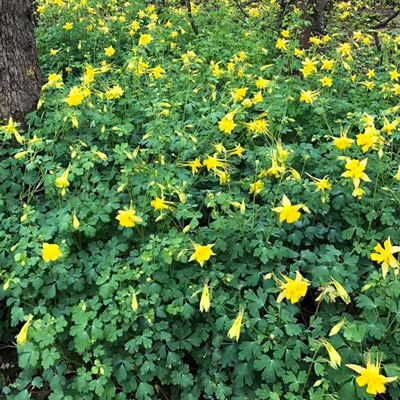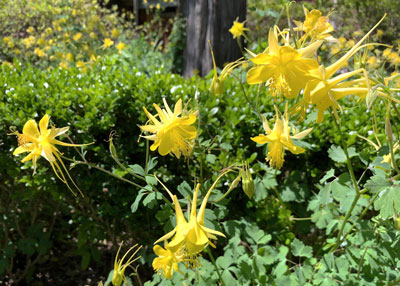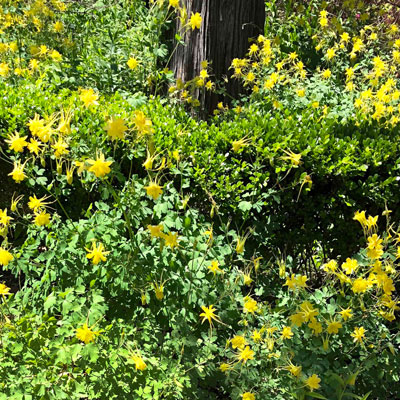A columbine above all others
When people ask me about perennials that will bloom in the shade, this is the one that comes first to my mind. Oh, you have ajuga, oxalis and summer phlox, but somehow the spritely yellow blossoms of ‘Texas Gold’ columbines just bounce around in my brain. Especially now, when I’m seeing them in the best-dressed gardens in town.

Our ever-plant-lovin’ friend Greg Grant developed this from seeds he collected from Hinckley’s columbines he found along a tiny waterway in some faraway place in arid West Texas. If that sounds vague, it’s because that’s all the description he gave me.
On a concurrent search I will admit that my wife and I found a pool of water in Big Bend National Park, and it was also supporting a small stand of Hinckley’s. Benny Simpson, another plant man of an extra-worldly stature had told me about that one. So I do know that they exist.

But back to my story. Greg and his buddy, Prof. Emeritus (Can you tell I admire him!) Dr. Jerry Parsons of Texas A&M, retired from the Texas AgriLife Extension, worked hard to perfect this selection and build up its population, then bring it to market. They were supported in North Texas by another Extension worker Dr. Steve George. That was 30-ish years ago, and they must love seeing it in garden centers and gardens today. Thanks, guys!

So, here are its virtues…
• Prefers shade to part shade (morning sun, afternoon shade).
• Grows to 18-24 inches tall and wide.
• Attractive blue-green foliage.
• Flowers sunshine yellow with long spurs.
• Blooms April into May.
• Perennial (short-lived: 2-3 years).
• Reseeds itself freely.
• If spider mites turn leaves brown, merely cut plants off at ground level and allow new growth to take over.
• Transplants are easy to move if you’ll do it in early spring when they’re still small.
